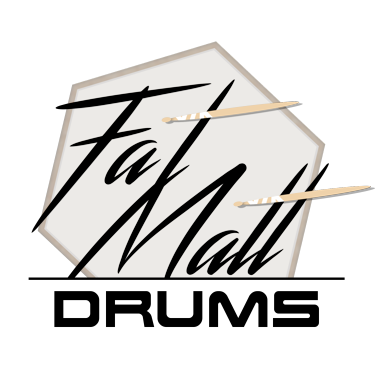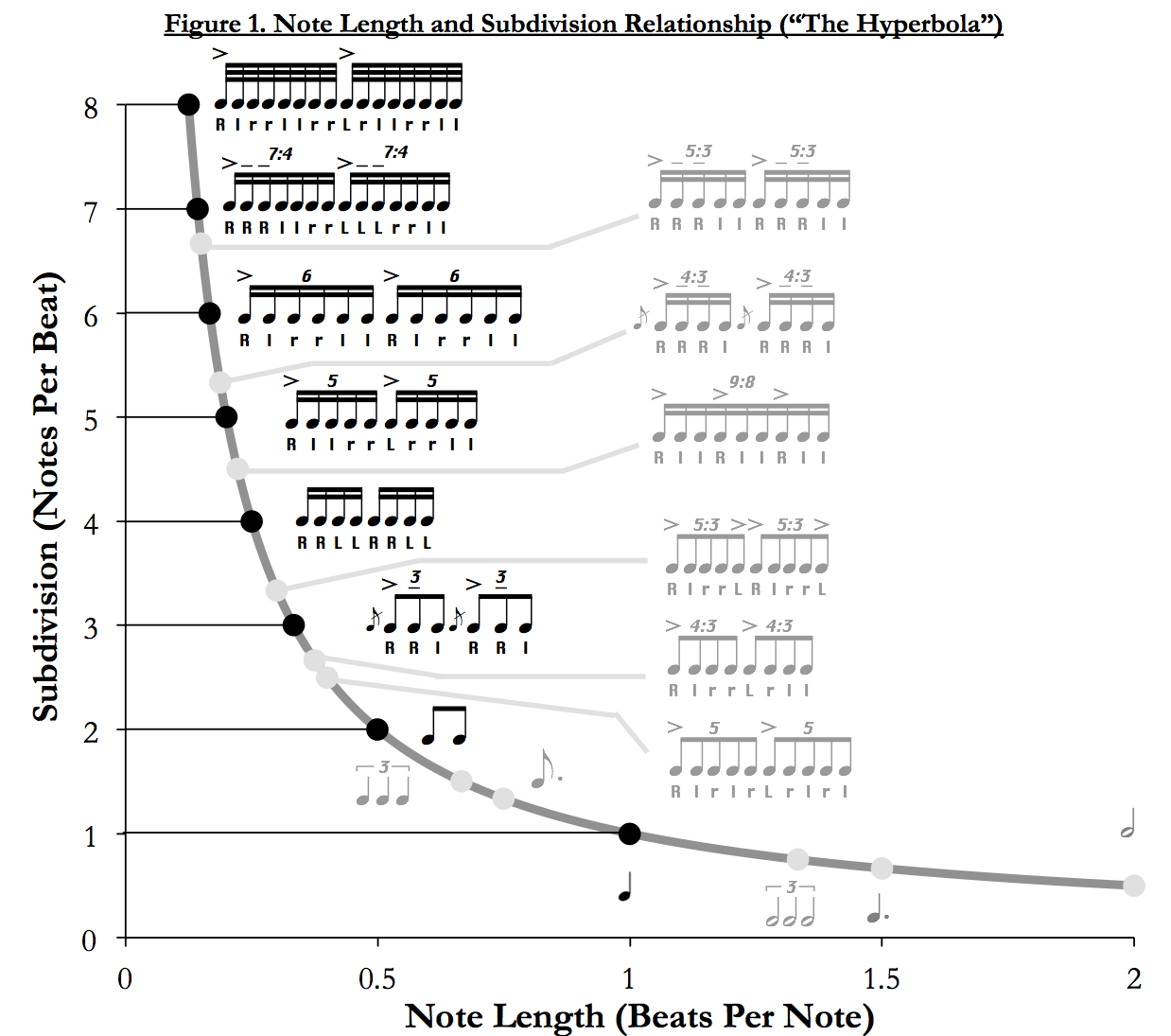Pitch and sustain are two tools that wind musicians use to speak the language of music; however, they are largely unavailable to the battery percussionist. Certainly, tonal bass drums and multi-tenors allow for some elements of pitch, and selective muting creates cool effects by manipulating sustain (e.g., tenor “skank” figures). But these are not usually the ways that drummers make up for this “linguistic gap.” Instead, we convey similar ideas by playing many notes in quick succession, often as roll figures. The frequency of strokes creates the illusion of sustain, and varying the note spacing creates diverse sonic textures, analogous to the variety afforded by changing pitch.
Just as we might hear a flam as a single, thick attack instead of two notes played in quick succession, we tend to hear fast rhythms as sustained tones. It does not stop sounding like multiple strokes except in the extreme case of buzz rolls; however, the quantization of the rhythm loses meaning to the listener, and the notes become “connected” in a sense. Figure 1, below, graphically depicts the relationship between the subdivision (notes per beat) and the note length (beats per note), as a curve commonly called a hyperbola. Example rudiments are shown for selected subdivisions on the curve.
Along the horizontal leg of this curve, the lengths of notes create rhythmic intent and groove for the listener. The further we climb up the vertical leg of the curve, the less the space between notes will be rapidly and automatically parsed by the listener. That is not to say that the space between notes matters less—only that the listener will less precisely track the perceived spacing against the overall pulse. At a certain point, we are merely filling time with notes instead of deliberately conveying a rhythm. For example: a seasoned snare drum technician might be able to correctly identify a barrage of fivelet singlestrokes as such, and the performers will have developed an unwavering commitment to rhythmic accuracy in order for the figure to speak cleanly. However, the musical effect is one of a sustained presence having a particular texture, rather than one of a proud declaration of fivelet timing.
This “rhythm / longtone duality” explains why dissimilar rhythms do not always clash in context. For example, at 120 BPM, a sixteenth-note roll in the snare drums may complement a triplet figure in the bass drums; the bass drums create the rhythmic statement, while the snare drums merely place a texture on top of it. If the snare drums instead played the 16th-note “check” of the roll, the disharmony between the rhythms would be easily apparent, possibly creating conflict not written in the music. In this example, if the snare part needed to be “watered down” for cleanliness, replacing the open roll with its check would not achieve the desired effect, and a buzz roll would probably be the more appropriate simplification.
Oftentimes, the spacing between accents will convey the rhythmic intent of a phrase, while changes in the spacing of the inner beats create tension and direction for the phrase (to be enhanced by dynamic shaping). An example of a two-bar phrase of snare drum music is provided in Figure 2, below, and the shaping created both by the rhythmic modulation and the dynamic changes is represented graphically in Figure 3, with the notes per beat and relative note volume plotted versus time.
Of course, this entire idea depends on the rhythmic precision and sound quality of the “fast” rhythms. Only a solid, repetitive sound allows the many strokes to be perceived as a single, long tone. For this reason, an absolute mastery of the space between strokes is required for the effective use of roll figures in battery percussion. Rehearsing rudiments and roll figures at different rhythmic speeds helps to build said mastery, and the graphic in Figure 1 (above) can provide some guidance for how these rhythms relate to each other, and, therefore, how the appropriate proportions of forearm motion, wrist turn, and fulcrum pressure (finger assistance) will change as different rhythms are transitioned into.
Much textural variety and rhythmic direction was created in the musical excerpt of Figure 2 (above) by having rolls with, effectively, different diddle interpretations. The slurred tap-fives (5:3 tuplets), being faster than the slurred six stroke roll (sixteenth-note triplets), can be viewed as having a long tone quality that is somewhere in between that of the slurred six stroke roll and that of the straight seven-stroke roll that ends the measure. This sort of rhythmic shaping is only possible with performers who are mature enough to correctly command the space between notes (or, to be more technically accurate, the timing between strokes) in order to reliably and reproducibly create these different diddle spacings, repetition after repetition.
The direction of the phrase and, for lack of a better term, how musically “interesting” the notes are contrasts with the more “square” interpretation reflected in the excerpt as re-written below in Figure 4. Compare the graphic in Figure 5 below with that of Figure 3 (above) to see how the greater variety of stroke frequencies in the original excerpt creates further direction for the phrase than what is conveyed by dynamics alone
For an extensive collection of exercises that works on this exact concept to build muscular awareness and a mastery of stroke timing, get the free book Rudiment Control: Clinic Edition from fatmattdrums.com



